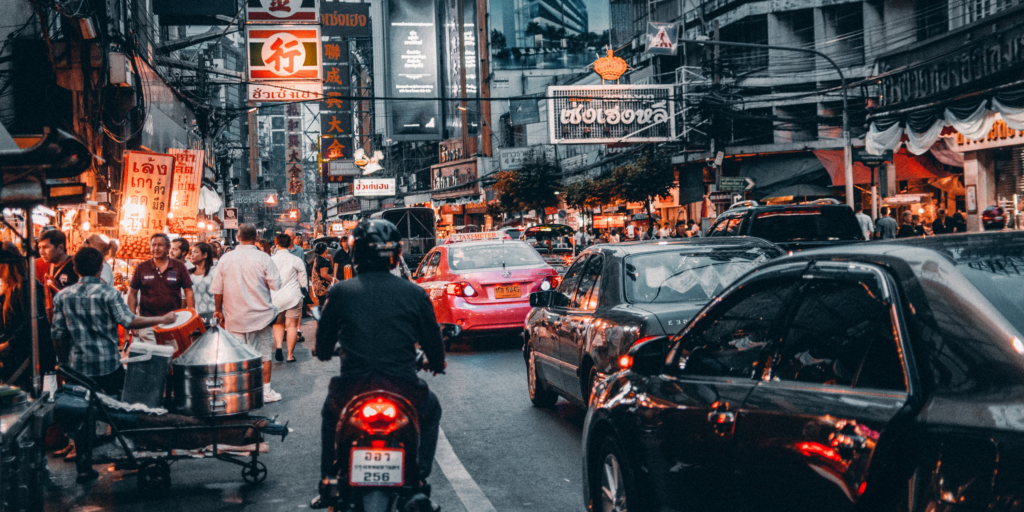Thailand’s working-age population could decline by around a fifth by 2050, but things are not as grim as they look.
China’s demographics alone – even if you ignore its increasing marginalization from global trade, its dependency on food and energy imports, and President Xi Jinping’s utter gutting of the bureaucracy of anyone who might bring him accurate but unwelcome news – could collapse its economy in the coming decades. Between now and 2050, by conservative estimates, its working-age population will shrink by 220 million people, around a fifth.
That has justifiably sparked major concerns about whether the Chinese state can survive in the coming decades. Thailand will also experience a demographic decline, which has led to similar doom-ish predictions about the country’s future stability.
Thailand’s working-age population could decline from around 50 million people in 2020 to 38 million in 2050, so by around 400,000 people each year (or also by around a fifth). At the same time, those over 60 will account for around 40 percent of the population by then (up from nearly 20 percent in 2020).
Already, there are almost twice as many over-65s as under-14s. By 2050, there will be just 7.8 million children versus 21 million retirees and less than two workers paying their taxes and growing the economy for every retiree who saps state money.
Thailand is joining the ranks of the super-aging Asian states without some of the advantages of those countries.
Super-wealthy Singapore had a workforce of less than 5 million strong at its peak, so requires far less effort to attract a few million high-earners, plus the state can easily fund its retirees.
Japan and South Korea have far larger economies and wealthier citizens than Thailand. Both have also effectively offshored their industrial base; their companies invest abroad, hire abroad and sell abroad before shipping the profits home to pay for their mass of retirees. Thailand cannot export its industrial base.
However, Thailand has some advantages that those countries don’t. It is accustomed to migrant labor (peworking-age populationrhaps a tenth of its workforce today) and is surrounded by poorer states that will see their working-age populations increase. Cambodia will have 2.2 million more 15-64-year-olds by 2050; Laos will have 1.6 million; Myanmar an additional 3 million.
Granted, not all of those youngsters will relocate to Thailand. Even if they did, they’re only half of the number of workers Thailand needs. But at least those migrants can pick up some of the slack.
Bangkok could also get a little more creative and try to attract more Filipino and Indonesian workers; in 2050, Indonesia’s workforce will increase by 18 million, and the Philippines’ by 28 million.
Moreover, it could boost its total fertility rate through some interesting schemes Bangkok is thinking up, such as state-funded fertility treatment. Even if that works, though, you’re going to have to wait almost two decades before those babies enter the workforce.
The booming population of retirees (32-38 percent of the population by 2050, depending on whether the retirement age changes) will be a massive burden on the state purse. But Thailand isn’t in a bad place starting on that path.
It already has one of the lowest out-of-pocket health expenditures, as a percentage of current health expenditure, in Asia, meaning the state is accustomed to paying for health services. It was around 10 percent in 2020, compared with 35 percent in China. Tax revenue is around 15 percent of GDP, far higher than in most Southeast Asian countries, so Thais are already used to the state feeling inside their pockets, which it will have to do a lot more in the coming years. The national debt has spiked since 2019 to around 60 percent of GDP, but the government does have some wiggle room.
In 2019, only 34 percent of people over 65 lived alone or with only a partner, a smaller percentage than in Vietnam, the Southeast Asian country aging fastest after Thailand. Around two-thirds of Thais aged over 65 still live with their family members. And there’s room for more elderly Thais to work. The labor force participation rate of people aged 65 years or over is just 26 percent in Thailand, quite low by Southeast Asian standards.
Thailand isn’t at risk of food shortages. It has 0.24 hectares of arable land per person, compared with 0.08 for China or 0.07 for Vietnam. Thailand is the world’s 13th largest food exporter, accounting for 2.3 percent of the global food market. It reportedly has a self-sufficiency ratio for staple foods (rice, chicken, eggs, etc.) of around 100 percent. By comparison, Singapore, China, Japan, and South Korea are all net importers of food, and none can dream of self-sufficiency on that front.
Last year, Thailand restarted mining potash, and the government reckons the country has the world’s fourth-largest reserve of these minerals that make potassium fertilizer. Ideally, Thailand will become less dependent in the coming years on fertilizer imports, which would make it self-sufficient in food production and in the inputs for food production.
Automation of agriculture is needed, and the government is making some waves of that. When cities industrialize, farmers are pulled into urban areas because of the attraction of higher wages. When farms industrialize, that pushes farmers into the cities, since so few hands are needed to do the work.
Fortunately, Thailand’s cities can take the load of newly urbanizing migrants. Its urbanization rate is around 52 percent, compared to 66 percent in China. Plus, the coming push for farmers to move into the cities will mean more workers for the urban industries that will soon be short of employees.
Thailand’s economy isn’t as reliant on scale as others. In 2019, Thais had the third-highest productivity rate of Southeast Asians, after Singaporeans and Malaysians. It was far higher than Vietnamese, Indonesians and even Chinese.
Education and re-skilling reforms are needed since Thailand must count on attracting higher-end investment based on the skills of its workforce, not its scale or cheap labor. China will have the opposite problem: a shrinking workforce that is relatively unproductive.
None of this is to say that Bangkok cannot screw it up. The government could do with scrapping its ludicrous $14 billion cash handout scheme and allocating that money to wannabe mothers and soon-to-be retirees. It needs to roll out the red carpet for migrant workers, Filipinos especially. It must continue improving productivity through education and re-skilling since it won’t compete on scale with near neighbors. It also needs political stability, so not a military coup every decade.
The article was originally published by The Diplomat.






